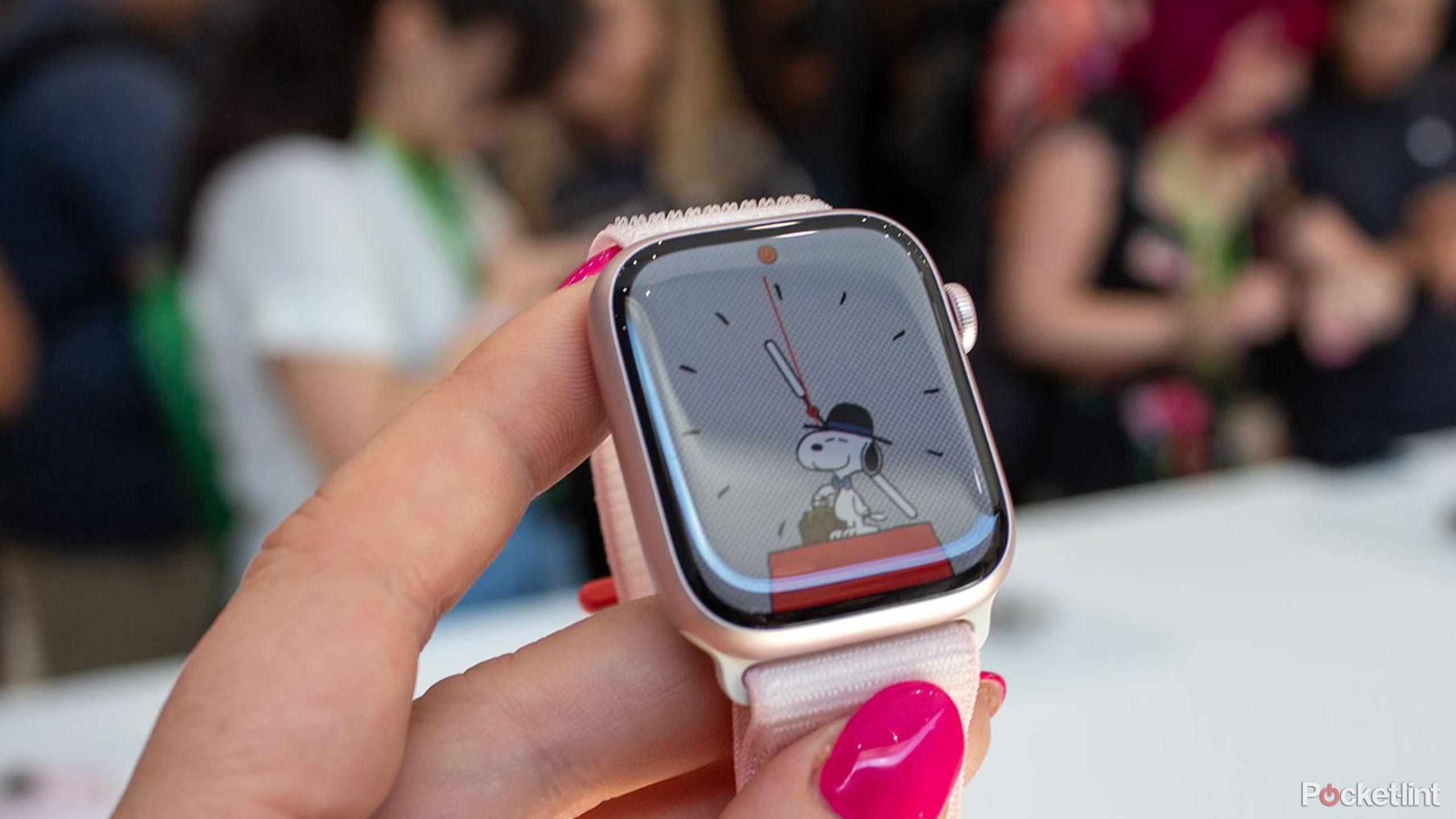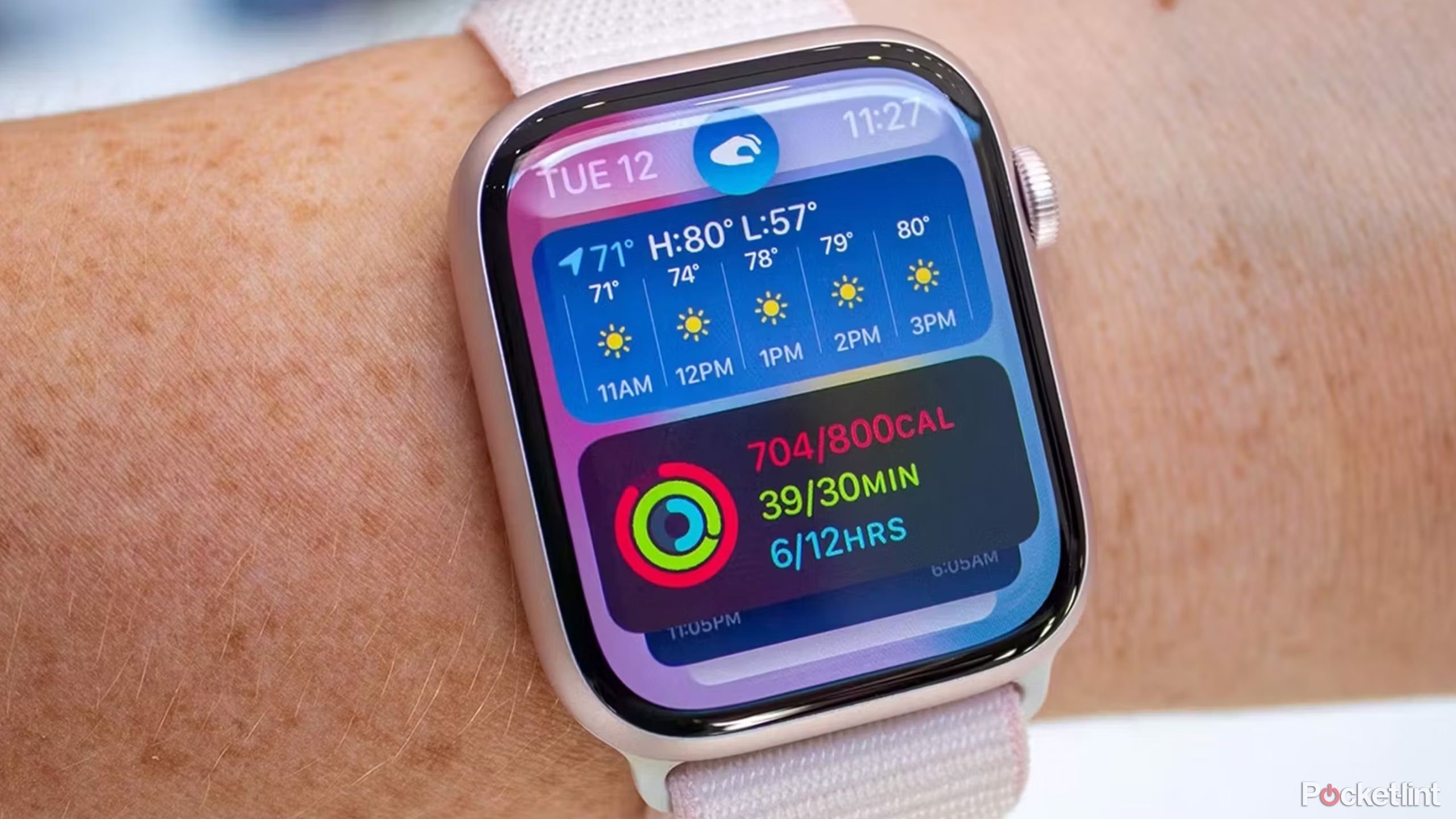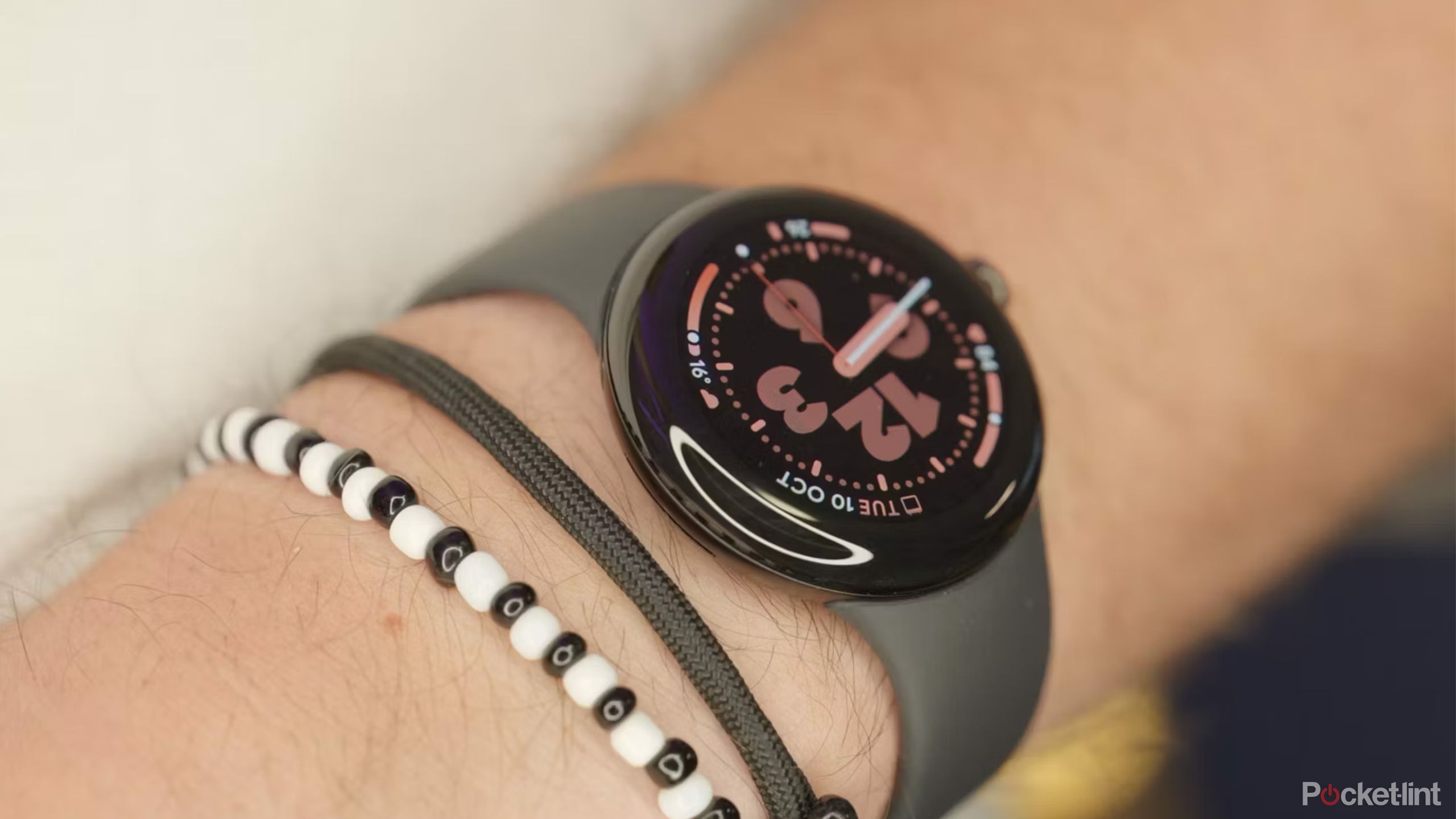-
Apple Watch Series 9
$329 $399 Save $70
The Apple Watch Series 9 represents Apple’s best effort so far. In terms of fitness, the watch is practically packed with sensors and can track a variety of things from heart rate to blood oxygen levels. It’s also, by far, the best option for iOS users.
Pros- Superb display and performance
- Loaded with sensors
- Slick software
Cons- Minor upgrade over Series 8
- Weak battery life
-

Google Pixel Watch 2
$300 $350 Save $50
The Google Pixel Watch 2 is a substantial upgrade over its predecessor with excellent Fitbit integration for fitness tracking, a sleek design, and good performance. Like the Apple Watch, it also comes with a multitude of sensors to measure fitness.
Pros- Fantastic Fitbit integration
- Beautiful design
- Comprehensive fitness tracking
Cons- Battery life could be better
- No iOS support
One reason to own a smartwatch is to monitor your general well-being. Today’s wearables can track workouts, heart rate, stress levels, sleep quality, and more. It’s not only very cool but also helpful in keeping a person healthy and happy. The Apple Watch Series 9 and the Google Pixel Watch 2 are among the best smartwatches you can buy right now.
The Apple Watch has long reigned supreme at the top of the smartwatch hierarchy. In fact, Series 9 sits solidly at the top of our best smartwatches list for 2024. However, right alongside it is the Pixel Watch 2. Google’s latest smartwatch improves significantly over its predecessor with better battery life, more health sensors, and other upgraded internals. So, which one is better for fitness and well-being? Let’s find out.
-
Apple Watch Series 9 Google Pixel Watch 2 Case Material Aluminium or Stainless Steel 100% recycled aluminum Case size 41mm, 45mm 41mm Display 1.7-inch, 430 x 352 pixels, 2000 nits (41mm), 1.9-inch, 484 x 396 pixels, 2000 nits (45mm) 1.2-inch, 450 x 450 pixels, 1,000 nits CPU S9 chip, W3 chip, U1 chip (2nd gen) Qualcomm W5100 with Cortex M33 co-processor Battery 308mAh 306mAh Connectivity GPS only, GPS & Cellular 4G LTE available, GPS, Bluetooth 5.0 and Wi-Fi 2.4GHz Health sensors Body temperature, Blood oxygen, Optical heart rate, Electrical heart rate Compass, Altimeter, SpO2 monitoring, Multipurpose electrical sensors, Multi-path optical heart rate sensor, 3-axis accelerometer, Gyroscope, Ambient light sensor, Electrical cEDA sensor, Skin temperature sensor, Barometer, Magnetometer Dimensions 41 x 35 x 10.7mm (41mm model), 45 x 38 x 10.7mm (45mm model) 41 x 41 x 12.3mm Weight 41mm, 31.9g (aluminum), 42.3g (stainless steel), 45mm, 38.7g (aluminum), 51.5g (stainless steel) 31g Brand Apple Google Heart Rate Monitor Optical and electrical Multipath LED sensor Battery Life Up to 18 hours Up to 24 hours (with AOD enabled) Operating System watchOS Wear OS 4.0 Colors Starlight, Midnight, Silver, Red, and PInk Champagne Gold, Matte Black and Polished Silver Storage 64GB 32GB Mobile payments Apple Pay Google Pay Water resistance IP6X IP68
 Price and availability
Price and availability
The Apple Watch Series 9 comes in 41mm and 45mm sizes. The former starts at $399 and the latter at $429. Adding cellular connectivity increases the price of the wearables to $499 and $529, respectively. Swapping to stainless steel increases the base price to $699 for the 41mm and $749 for the 45mm. All stainless steel models come with cellular connectivity by default. They are available in a wide variety of retailers, including Amazon, Best Buy, Target, Walmart, some mobile carriers, and the Apple Store.
The Google Pixel Watch 2 is only available in a 41mm size. It retails for $350 for the Wi-Fi only model and $400 for the LTE model. Like the Apple Watch, it’s available at plenty of retailers both online and in-store, including Amazon, Best Buy, Target, Walmart, some mobile carriers, and the Google Store.
 Design and display
Design and display
Both smartwatches have good-looking, distinctive designs. They certainly won’t be mistaken for each other in public, since the Apple Watch Series 9 uses either a rectangular 1.7-inch (41mm) or 1.9-inch (45mm) display, while the Pixel Watch 2 employs a round, 1.2-inch display.
On paper, the Apple Watch features the brighter display, putting out 2,000 nits at its brightest setting versus the 1,000 nits of the Pixel Watch 2. However, Google hits back with the sharper display. The Pixel Watch 2 has a 530 pixels per inch (PPI) screen while both sizes of the Apple Watch Series 9 boast just under 330 PPI. However, the Apple Watch Series 9 has a much smaller and better-looking bezel than the Pixel Watch 2.
Despite their different looks, both watches have some design similarities. Both watches feature a dial on the right side of the display and both allow you to customize the watch with replaceable watch straps. Both brands make their respective watch cases out of aluminum, although Apple does offer a titanium upgrade for a hefty price hike.
In all, we’re going to call this a wash. The Apple Watch Series 9 has a larger, brighter display and an upgraded titanium option. However, the Pixel Watch 2 is lighter, offers superior ingress protection, and has a sharper screen. Pick your poison.
Performance and battery life
Fortunately, both watches are capable of delivering the experience they promise. The Apple Watch Series 9 comes with S9, W3, and U1 (2nd gen) chips, while the Pixel Watch 2 sports a Qualcomm W5100. The S9 is the first major chip update Apple has introduced since the Series 6. The short version is that the watch will rarely struggle to perform the tasks you want, so the performance is quite good.
The Pixel Watch 2 also benefited from a hardware upgrade over its predecessor. The first Pixel Watch came with a Samsung Exynos chip that was very much showing its age by the time Google entered the wearable market. The W5100 is a much more capable chip and users shouldn’t have any trouble navigating the various menus or using apps on their watch.
For battery, the Apple Watch Series 9 sports a 308mAh battery while the Pixel Watch 2 has a 306mAh power cell. While they do have virtually identical sized batteries, their battery performance is not the same. The Apple Watch Series 9 gets about 18 hours of usage per charge, which we were able to replicate in our review.

Apple Watch Series 9: Playing it safe, but playing it well
With some upgrades but not huge changes, is the Watch Series 9 worth buying? Here’s my review.
Meanwhile, the Pixel Watch 2 is rated for 24 hours of use with the always-on display enabled, which we verified in our review. However, if you can live without the always-on display, you can squeeze a few more hours of life, making the Pixel Watch 2 the clear winner for battery life.

Pixel Watch 2: A Fitbit in disguise?
Fitbit isn’t the only good thing about the Pixel Watch 2, but it is the best thing about it.
Overall, you’re not going to have performance issues with either watch. The Apple Watch Series 9 has the advantage of newer hardware under the hood, but the Pixel Watch 2 wins in terms of battery life. Even so, both watches pale in comparison to the Galaxy Watch 6’s 40-hour battery life rating.
 Fitness and health
Fitness and health
Now we get to the crux of the comparison. Since smartwatches are often used as health devices as well, it’s important that both devices get things right. So, to start, we’ll list off the various sensors and measurements that each watch can handle.
Google Pixel Watch 2
- Heart rate via a multi-path LED optical heart rate monitor
- Electrocardiogram (EKG)
- Skin temperature
- Sleep
- Fall detection
- Blood oxygen but only while you’re asleep
- Pedometer via the internal accelerometer
- Stress levels via its electrodermal response (cEDA) sensor
With the above sensors and abilities, Google has an impressive amount of data that it can measure and present in different ways. Examples include Active Zone Minutes, Daily Readiness Score, and Body Response. These features track over 40 workout types, help you decide when to work out and when to recover, how well you’re sleeping, and your body’s responses to various activities and exercises.
Apple Watch Series 9
- Two heart rate monitors, including an electrical one on the rotary dial (Digital Crown) and an optical one under the watch case.
- Electrocardiogram (EKG)
- Skin temperature
- Sleep
- Fall detection, which can also detect a car crash
- Blood oxygen
- Pedometer via the internal accelerometer
Like the Pixel Watch 2, Apple uses the above sensors to measure a number of different things. For example, the Apple Watch Series 9 can still track your stress levels, but does so by accumulating data from the other sensors instead of having a dedicated stress sensor like the Pixel Watch 2. The two can measure most of the same things with varying levels of refinement depending on the product you choose.
In terms of fitness tracking, the Apple Watch Series 9 uses the Health app to record, track, and score your data. There are other Apple apps that can use or record data as well. In addition, third-party apps can integrate Apple Watch support via HealthKit, so you have plenty of options in the App Store as well. Apple backs up health data to your iCloud account.
The Pixel Watch 2 is, again, much the same. It’ll encourage you to use the Fitbit app for all of your health tracking and data recording, but you can use the Google Fit app as well if you want. The Sensors API lets third-party apps access your watch data. Fitbit is powerful fitness tracking software. However, to get every feature, you’ll need to subscribe for $10 per month or $80 per year. Apple gives you all of its analysis for free.
Overall, both watches can track, record, and store your health data. If you opt for Google Fit, both platforms even do it for free. However, the Pixel has a longer list of dedicated sensors and an optional Fitbit app, so while many folks may be comfortable with how the Apple Watch does things, the Pixel Watch 2 gives you more options.
 Software and other features
Software and other features
When it comes to operating systems, the two watches run the operating systems of their respective OEMs. Apple has watchOS while Google uses Wear OS. Both operating systems offer the same basic usability. For example, both integrate directly with the Apple App Store or Google Play Store. There are a variety of third-party apps for things like reminders, weather, note-taking, timers, stopwatches, email, messages, and other functions.
Additionally, the feature set is fairly similar. The above fitness features are baked in each device’s respective OS. Moreover, both can do things like ping your phone in case you lose it, pay for items with Apple Pay or Google Pay, and more. Both also allow you to talk to Siri or Google Assistant, control smart home gadgets, and check your smartphone battery.

Wear OS 4: Everything to know about Google’s next smartwatch software update
Wear OS is on the way – find out all the key details here.
However, a lot of people like watchOS. It’s smooth with a good UI that follows Apple’s habit of making products that “just work.” Wear OS is no slouch in this arena, but watchOS does seem to exude another layer of refinement that people truly enjoy, especially with the third-party app experience. Plus, objectively, watchOS has a few extra features, like its NameDrop functionality that lets you quickly swap contact details with another Apple Watch user.
Overall, the win here goes to Apple. It’s just a more refined software experience overall. The Pixel Watch 2 is still quite usable, and Wear OS has made huge leaps in smoothness and usability over the last few years. However, third-party apps could be better, and Wear OS is still behind watchOS in terms of features.
Verdict: is the Pixel Watch 2 or the Apple Watch Series 9 better?
As Homer Simpson once said, the two greatest words in the English language are “de” and “fault.” The reason I bring that up is because the choice between these two smartphones is determined by something a lot simpler than feature sets, design choices, or screen sharpness. The Watch Series 9 only works on iPhone and the Pixel Watch 2 only works on Android.
That means whatever phone you have in your pocket determines which watch you can realistically buy. Those of you with iPhones can only go with the Apple Watch. Folks with Android have to go with the Pixel Watch 2 (or other Wear OS watches). Your smartphone choice dictates your smartwatch choice by default.
We think the Apple Watch Series 9 is the better overall smartwatch. The OS is more mature with better third-party apps. It measures plenty of fitness data and analyzes it for you for free. Plus, the screens are bigger, brighter, and look nicer with their smaller bezels. When sat side by side, the Apple Watch feels like a more mature product.

Apple Watch Series 9
Our top choice
$329 $399 Save $70
With that said, the Pixel Watch 2 is part of a product lineup that is quickly gaining momentum. It measures the same health data as the Apple Watch and its Fitbit integration is truly excellent, even if you have to pay for it. The screen is sharper, it’s lighter on your wrist, and the battery life is 33% better at minimum. Plus, Wear OS is closing the smartwatch OS gap every year. If you end up with one, you still have an outstanding smartwatch.

Google Pixel Watch 2
Runner-up
$300 $350 Save $50
Trending Products



















